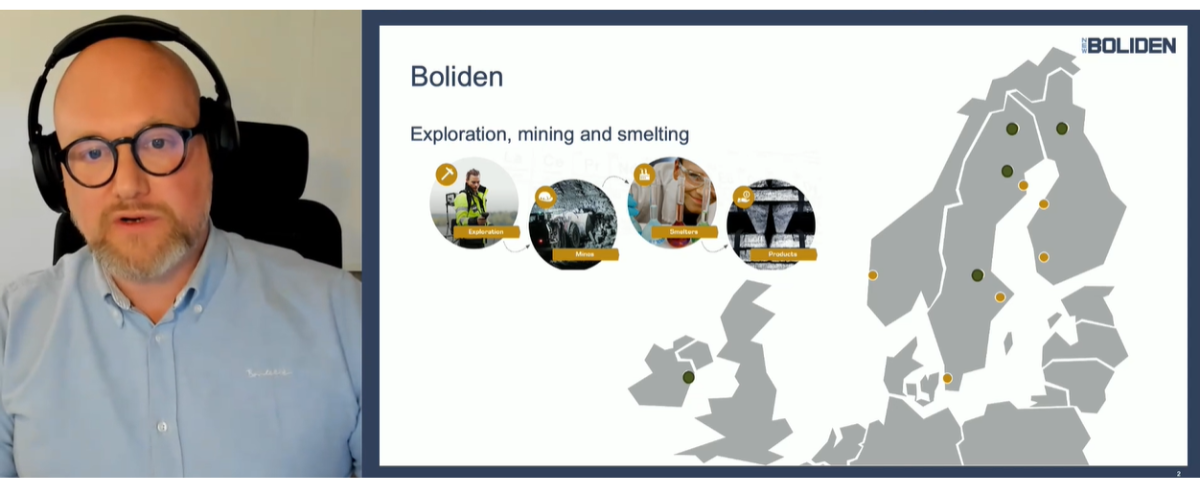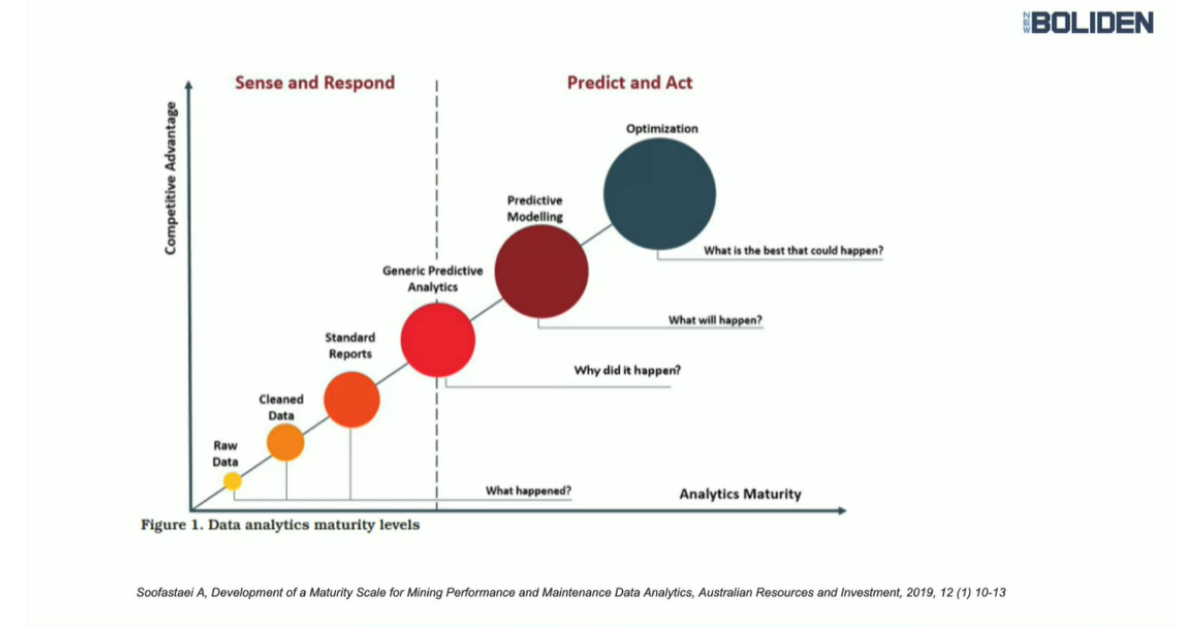
Forewords
The Value Mine crossborder event was organized 16th June 2022 as a hybrid side event of Euromine Expo in Skellefteå, Sweden. The event attracted participants from industry, SMEs, and other actors to hear and discuss the mining industry´s digital future. This post focuses on mining industry talk presented by Fredrik Hases from Boliden AB. Previous posts were Sitra and Bosch Rexroth and next posts will focus on the industry talks of Epiroc and Hannukainen Mining. After these industry talks we will publish SME talks. Stay tuned!
Boliden, Fredrik Hases, Program Manager AI
In his presentation, Fredrik talked about digitalization and AI and especially the AI Program Boliden has. Fredrik has been in Boliden over 17 years and he has been working with ICT since 2009 in various roles. Fredrik is co-hosting the AI Program with David Jägerfeld who is the program manager of the program.
Boliden is a mining company, but they are taking care of the whole value chain from exploration, mining and smelting and also selling the products. Their mines are located in Sweden, Finland and Ireland.

Digitalization - why and how?
Fredrik is proud that Boliden has always been among the first ones to implement new technologies - digitalization, automation and AI. He adds that Boliden has been very good at Industry 3.0 and now they are on the edge of getting more and more to Industry 4.0.
He points out that IT always needs to support the business strategy to have the right focus areas to work on. To enable Boliden Mines business strategy their IT department needs to work on infrastructure, AI & Machine Learning, Data & Analytics, Digital Workplace and cost efficient and standardized IT. All these include cybersecurity which is of course more important than ever because the more digitalized you get the more you need to emphasize cybersecurity.
- Challenge today with strategies and focus areas is that we live in a world of rapid change so we need to work with those focus areas all the time, says Fredrik. He continues: -The new way of working is to be able to change focus areas and prioritize differently. I find it quite fun but also quite challenging, of course!
Drivers for digitalization
No one does digitalization just for fun, even though it can be fun, but businesses have several drivers to do digitalization.
Here are the drivers for change he presented:
- Investments in digitalization and automation to increase situational awareness, efficiency and safety
- IT needs to become more integrated in and work in partnership with business
- Increasing pressure for sustainability and carbon footprint reduction 40% by 2030
- Democratization of data and insights means new tools, ways of working, universal data responsibility and governance models
- This is about how we produce quality data that every employee can use and understand and make information and decisions based on it. You have to have structured and good processes.
- Encourage agility and innovation through better connectivity and decision-making capabilities
He thinks it’s important to keep in mind these drivers so in everyday work we remember why we are doing this.
Boliden AI in Mining program
Boliden started the AI in Mining Program because they saw that AI will do the same to machines what automation did before. They started a program because they didn’t have any department for that, so it made sense to start a cross-functional program with technology department and IT department. The purpose of this program is to inspire to be the experts in it and also to provide a good architecture for it and a good way of working to develop and govern it at the same time.
Then Fredrik introduced some interesting examples they are working on right now with digitalization and AI.
Example 1: Data driven maintenance in Mines for proactive oil change
Optimizing the oil change can save even 4 million Swedish crowns in a year if you do it at the right time. You just need the sensors to collect the data and then use this knowledge for condition-based monitoring and maintenance. Of course sometimes a maintenance strategy can be that you change the part when it breaks but there is huge potential for optimizing the maintenance. At the moment we are collecting data and we are developing the processes to use the data.
Example 2: AI-based boulder detection to reduce downtime of conveyor belts
This example uses computer vision. The problem is that some boulders are too big and they cause problems on the conveyor belts. We found out that you can even use a normal camera, you don’t need to buy a smart camera if you just have an edge device. We haven’t automated it fully yet but we are planning to do it.
Example 3: Increase recovery in floatation using Machine Learning -based support (up to +1% recovery)
When you have connected data, when you put some model that can actually combine footage of the bubbles in floatation and time serious data you can bind them and create models and you can teach your operators this is how you can do this to optimize the outcome. That can be a huge profit. We are still working on that.
Example 4: AI-driven support for operators of the mill
It would be good to have a system telling you you should do this, you should do that. Of course we don’t want to make people obsolete because of AI but we want to let the operators have that support so they can focus on other things.
Example 5: Tracking of ore for improved concentrator throughput
This is because in our open pit mine, you need to know before the ore arrives if it is hard or soft rock. Maybe you should put it in a pile if it’s too hard.
Example 6: The ”Unreal” Mine, Digital twin platform using unreal-machine
We are trying to utilize a game engine on a small scale using Unreal Engine and it’s quite interesting. When you start using digital twins, just do it, because then you will know that you want to connect more data to your digital twin because you want to have more information about it. To me this is the holy grail of visualization where you can have the mine in the virtual world and just go in there and see everything.
Digitalization challenges
In the end of his presentation, Fredrik showed this picture of the data analytics maturity levels: what happened, why happened, what will happen and what is the best that could happen.
The challenge is that in every company some departments are further along this road than others. Some departments may still struggle with raw data while other departments are already in predictive analytics.

Fredrik revealed they have started the Mines Digital Transformation Hub where they are working with the business to bring more business intelligence and data analytics to the business. The work is done in projects using XOps methods in agile teams. They create agile teams, where they have on a business unit level empowered engineers and IT coordinator and in the business area enabling & implementation roles and domain experts.
- This is also a bit of a challenge, because if you start to work agile, not everyone in your company is used to it. It’s a cultural shift also, ends Fredrik his presentation.
 Fredrik’s key takeaway:
Fredrik’s key takeaway:
If you want to have a good digitalization journey, you have to be really close to the business because you have to be fast and understand the demands of the business.
- Fredrik Hases, Boliden AB
Main contact and inquiries:
Liisa Koivisto, DigiProcess project, Kemin Digipolis Oy, +358 40 1980 567, liisa.koivisto@digipolis.fi









